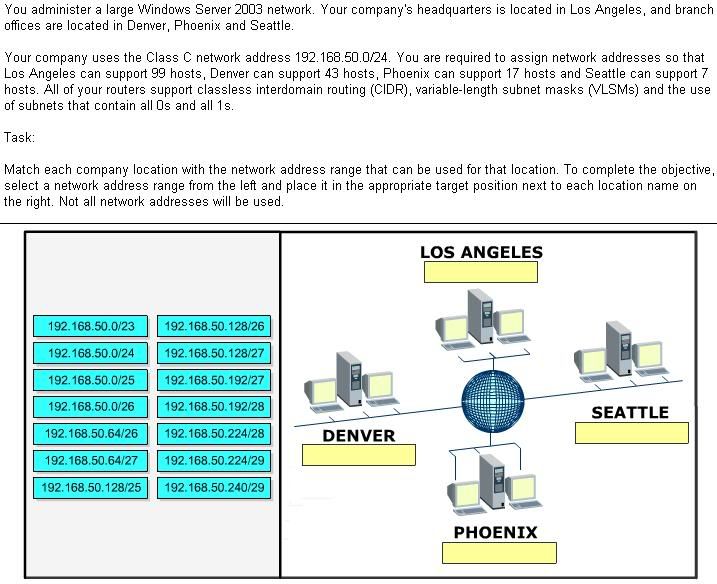Came across this question and am stumped:

I'm thinking you want /25 for Los Angeles, /26 for Denver, /27 for Phoenix, and /29 for Seattle. The only problem is that there are multiple choices when it comes to those. An explanation on which one to choose why would be greatly appreciated!